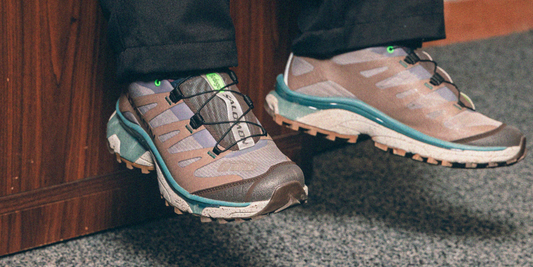PART I – Hey There Daddy-O
Great works of art have often proved shocking upon their initial release. Manet’s Luncheon On the Grass so profoundly offended Napoleon III, that the emperor permanently shuttered the exhibition which displayed it, despite having established the exhibition himself. Stravinksy’s groundbreaking The Rite of Spring caused a soccer hooligan style riot amongst the polarized audience of Paris connoisseurs during its first ever performance. The Adventures of Huckleberry Finn remains the subject of banned book controversies to this day, and, naturally, nearly every popular musician dating back to the jazz age has been accused of being in league with underworld forces, constituting the gravest threat to the nation’s culture since the last one.
That art stirs up strong emotions, and creates controversy is not the headline. What is curious is our own relationship to these works after they have passed into widespread acceptance. It’s as if the approval of respectable society renders the controversy aspect inert, except as a source of gentle mirth at the outdated mores of a bygone age. To lose sight of a work’s challenge to some element of the status quo, because times have changed, is to lose the essence of what is being expressed through the work.
Jack Kerouac’s On the Road suffers from this phenomenon more than most. It is not an overtly shocking book, in the sense of obscenity trials or mass demonstrations, but the premise of an unstructured existence leading to self discovery and true freedom were in stark contrast to the dominant culture of the United States, circa 1957. As the buttoned up 50s gave way to the liberation of the 60s and the ultimate me decade of the 70s, On the Road went from defiant and chaotic to romantic and idealized. Worse still, as the 70s wound down into ‘Morning In America,’ the fifties’ second act, On the Road became a source of wistful nostalgia.
Though On the Road is the definitive prose account of the Beat Generation, to view it solely through the limitations of a period piece lens would severely limit the scope of the book’s influence, and lose sight of why it continues to resonate with successive generations. At its core, On the Road is a book about freedom. Not merely freedom as an abstract concept, but as a tangible item that must be actively pursued and seized.



PART II – The Open Road
What is it that makes “the road” such a powerful symbol of freedom? It’s tempting to link the phenomenon to the proliferation of the automobile, but really, it is an older, more primal concept than the car.
A nomadic, hunter-gatherer lifestyle was the earliest stage in human civilization’s collective development. This model was in direct conflict, literally, with its eventual replacement, the agricultural society. Though being tied to a permanent location was an obvious improvement in terms of life and death survival, the loss of the ability to roam was clearly a tradeoff, as it remained a powerful instinct in the human psyche.
One proof always cited as evidence of the Rome’s greatness was their system of roads that allowed for travel throughout the vast expanses of the Roman Empire. When Alexander the Great’s empire had found its physical limitations, Alexander, famously, wept. The dismal life of medieval serfs is summarized, quickly, by pointing out their obligation to tend a single piece of land, that they did not even own, for the duration of their meager existence.
The thought of never experiencing the wider world has been so stultifying throughout history that voluntary military service is popularly presented as a chance to “see the world,” in some form or another. The urge to wander is so powerful that the prospect of facing everything from broadswords and crossbow bolts to artillery barrages and mustard gas has actually been considered a viable, even attractive, alternative to living out one’s life on the same patch of mud and grass.

It is a cliché that technology makes the world smaller, but that doesn’t make it any less true. Not only has communication technology connected all points of the globe, mechanical, technological advances have made “the ends of the Earth” accessible by booking a flight online.
The expectations and structures of modern life can serve as formidable a barrier to travel as physical limitation. As modern advances make travel easier, they throw up just as many new obstacles; it’s doubtful that Kerouac and Ginsberg ever had to worry about their phone reception before they took off somewhere. That choice is the crux of what On the Road’s lasting message is. In the absence of any forcible obligation, the only thing stopping you is you.
Anyone who runs will identify with this impulse. It’s obvious that a five-mile run isn’t the same thing as an epic, cross-country road trip; it’s also irrelevant. Running outside is a chance to get lost in your immediate surroundings, maybe it’s just you the birds and the trees, maybe it’s the cool air and purple light of the early morning, or maybe it’s city streetlamps and neon signs instead. It truly does not matter. No time spent outside is wasted. Every footstep is a new possibility. Maybe you’ll turn down a street you’ve never been on this time.
So, lace up your shoes and just go.
The Bodega x Asics Gel-Classic 'On The Road' Pack will come with custom packaging and a disposable camera, releasing exclusively through Bodega and bdgastore.com at 11am EST on Saturday, January 9, 2016. Retail is set at $130 and sizes 5 - 13 US will be available.










Words: Dan Alvarez






